SCULPTING THE VOID
“When turning around a sculpture by Pistacio, our look penetrates it. At first we are attracted by the elegant and moving graphics drawn by its lines in space. It’s as if we wouldn’t stop here, leading us in spite of ourselves through the dynamics of its construction to an unknown place. It opens up an energy within us whose flow frees all the tensions. Would this place be that of our non-knowledge? The sculptor would thus work the void, this in-between of the line, like the matter of a fluid which would double its volume by the astonishing and vigorous vitality of its movement. Crossing the form, it would spread it out in the infinite range of possibilities in a circulation that allows one to move within it. There is thus no adhesion nor obstacle to the free path of imagination. Could it be how his sculpture think?
“Let no one enter here who is not a surveyor », said Socrate. For Pistacio, sculpture becomes an experience of a spatial, or even more of a cosmic thinking which should be neither fanciful nor pure random, but a skilful and precise exercise in balancing the voids.
The sculptor’s art seems to designate us, in this copy of the world it reveals in counter-form, this other thinking path.
When we examine the power of light that describes the form with that of its shadow, this path leads us to a greater sensitivity to our presence in the world, and also to a greater intelligibility of our means to conceive it through the experience gained on this journey, of our ignorance of the forces that cross us and move us. »
Evelyne Artaud, Curator of the exhibition
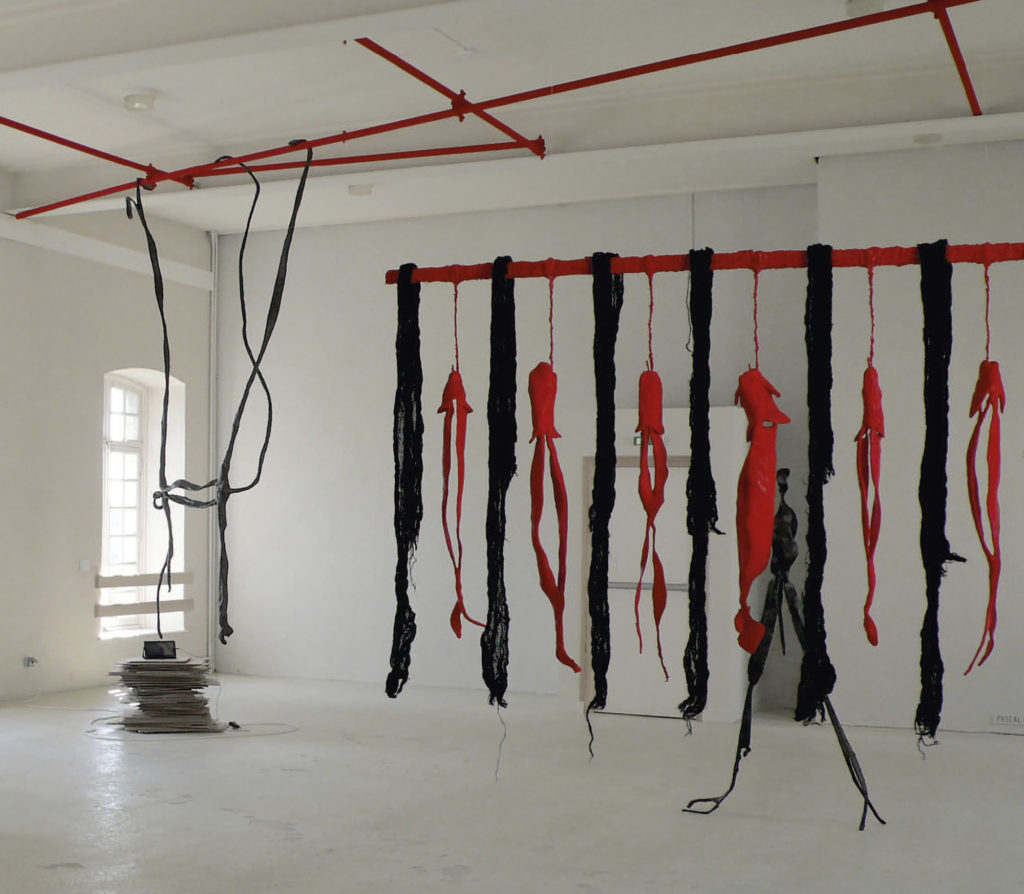
View of the exhibition “Anima / Animal”,
Royal Abbey of Saint-Riquier, 2015.
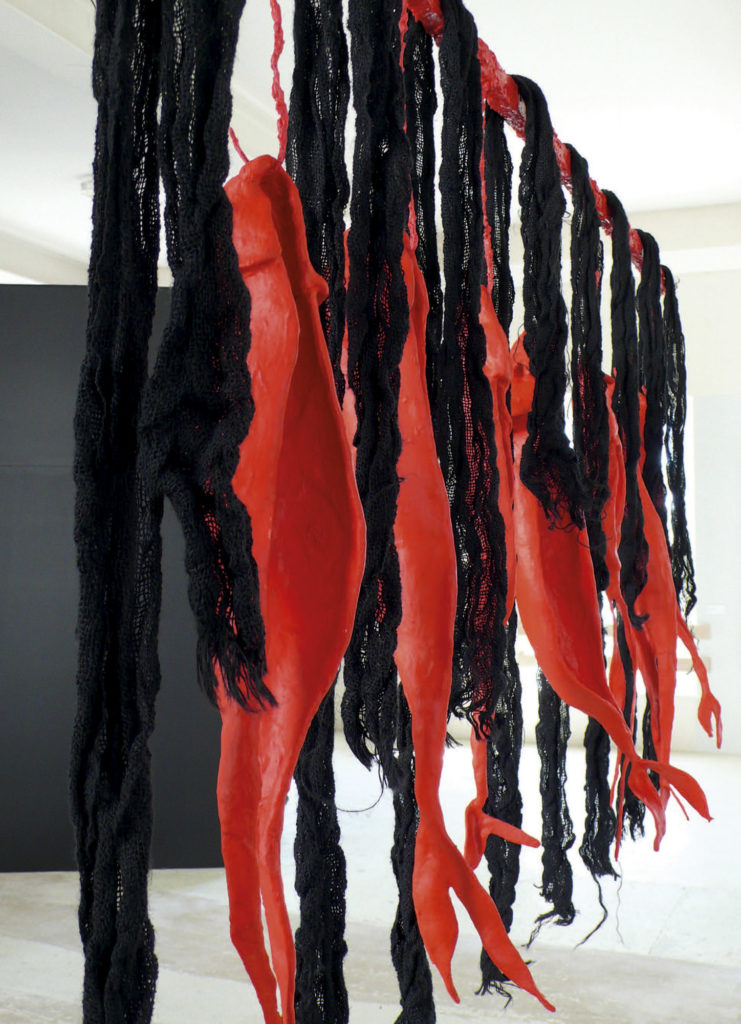
Pascal Pistacio borrows his forms from primitivism; in this respect his work could be compared to cave art. The faces are completely absent from his whole work and yet each piece is endowed with expressivity. This is because it always starts from an organic truth, animated by a breath that the artist infuses into it.
The method is no less singular: starting from a metal structure that forms the skeleton of the piece, the skillfully worked plaster gives their substance to the works. Iron and plaster can also be combined with other materials.
Consequently, the studio is filled with piles of wood, shells, corks, plastics, fabrics, cardboard of all kinds… as many objects recovered, recycled, diverted, and which then disappear under the thickness of the plastered strips.
The fishes are a symbol of vitality and fecundity. This symbolism is reinforced by their blood red colour. As predecessors of Man on Earth, they bear witness to the secrets of evolution. But here they are displayed lifeless, arranged as on fish dryers of Iceland or Norway.
Hanging on a kind of butcher’s hook, these fishes revisit the theme of carcasses and flayed oxen painted by Rembrandt, Soutine, Chagall, and so many others throughout art history.
M.L.
“Leucade’s witnesses”, 2014.
Metal structure, painted plaster,
hessian, wood, sealing wax,
140 x 200 x 40 cm.
The work mentions the monkey, a symbol of the origins of humanity. Does the monkey imitate man, or would man like to imitate the monkey in order to find the keys to the « world » before consciousness? Here the artist questions the nature of the animal and that of man, the links between art and money.
He forces us to question the capitalist era where virtual money prevails; where excess rhymes with overproduction.
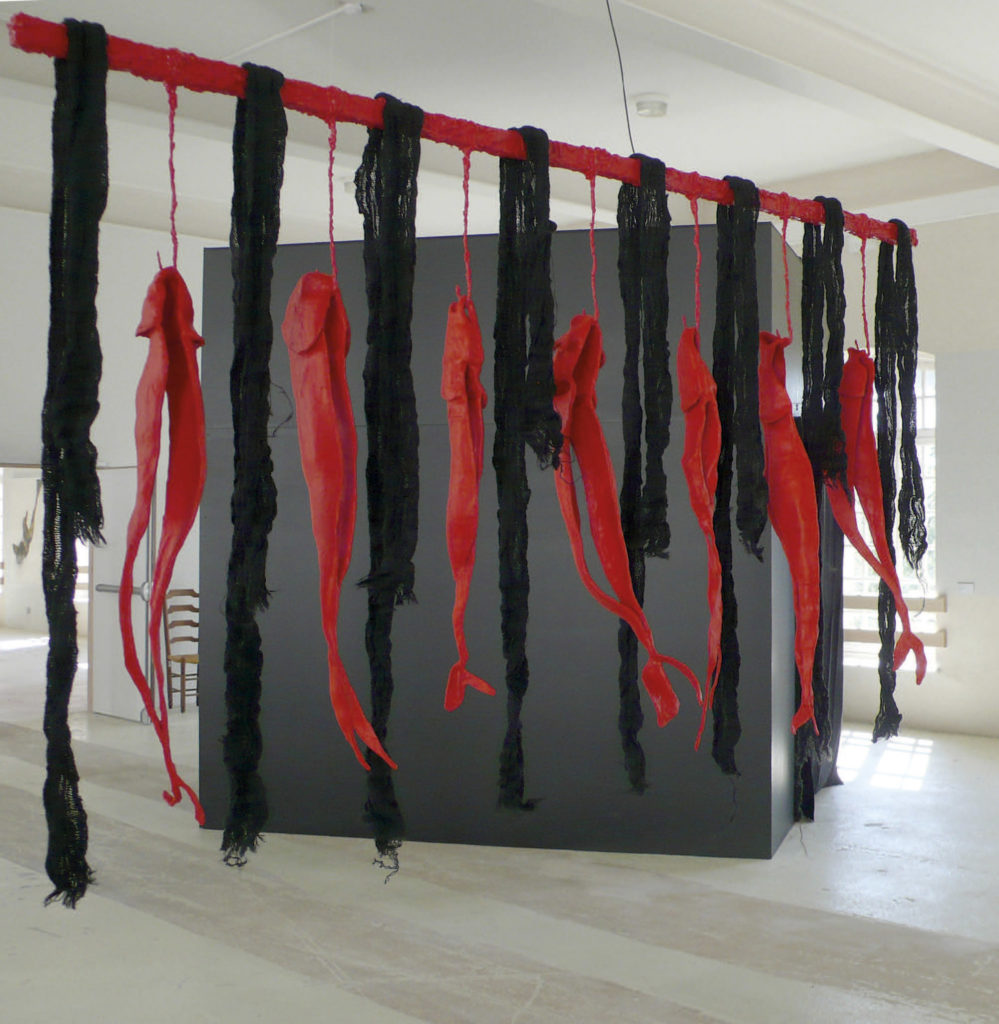
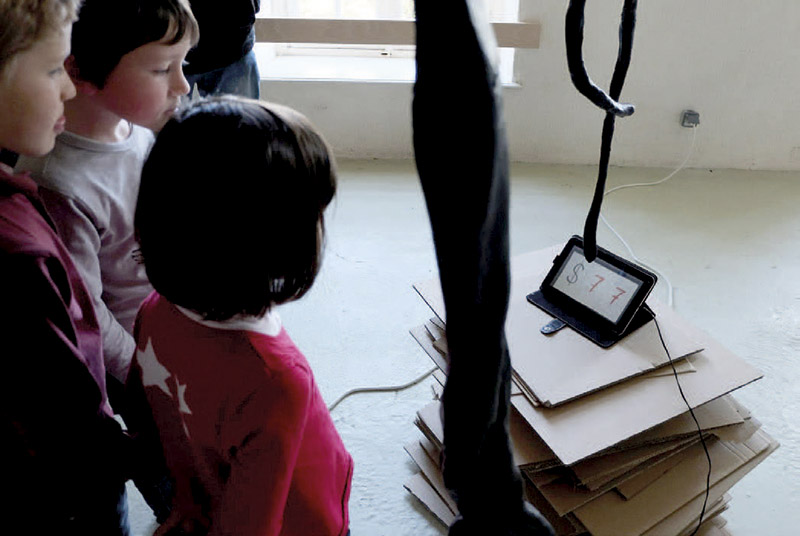

« Monkey Money », 2015.
Metal structure, painted plaster painted plaster,
cardboard, digital tablet,
475 x 400 x 300 cm.
Views of the exhibition in the French gardens at the Château d’Auvers-sur-Oise, 2014.
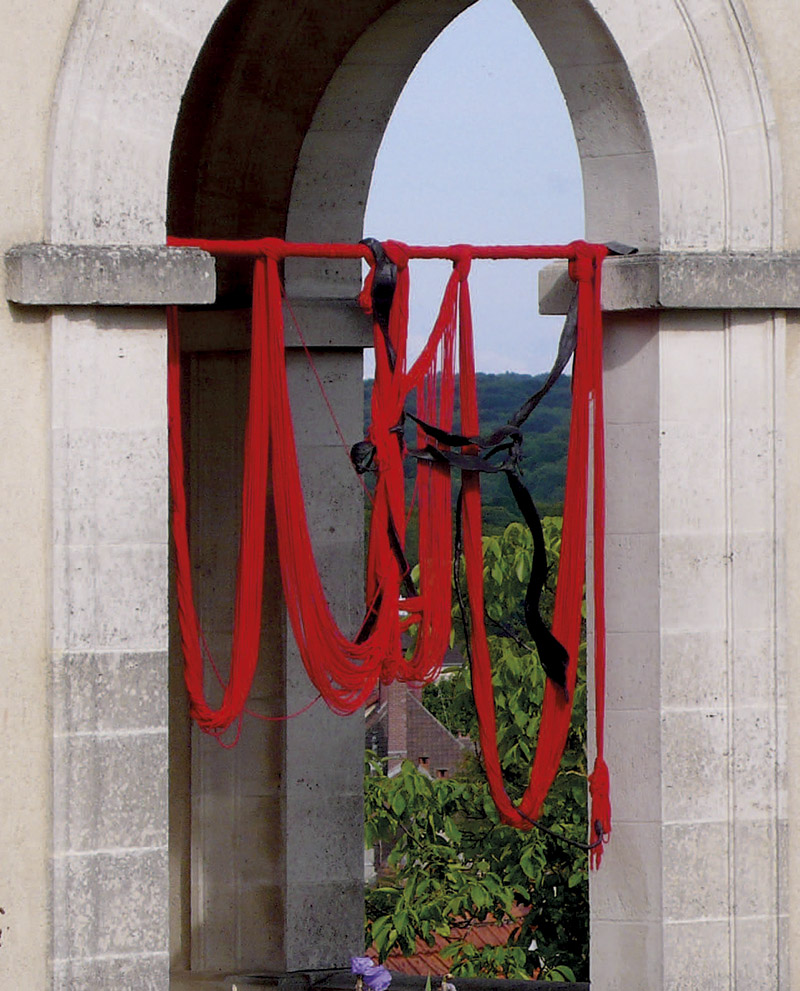
“I saw everything”, 2010.
Metal structure, painted plaster and wool,
350 x 200 x 30 cm.
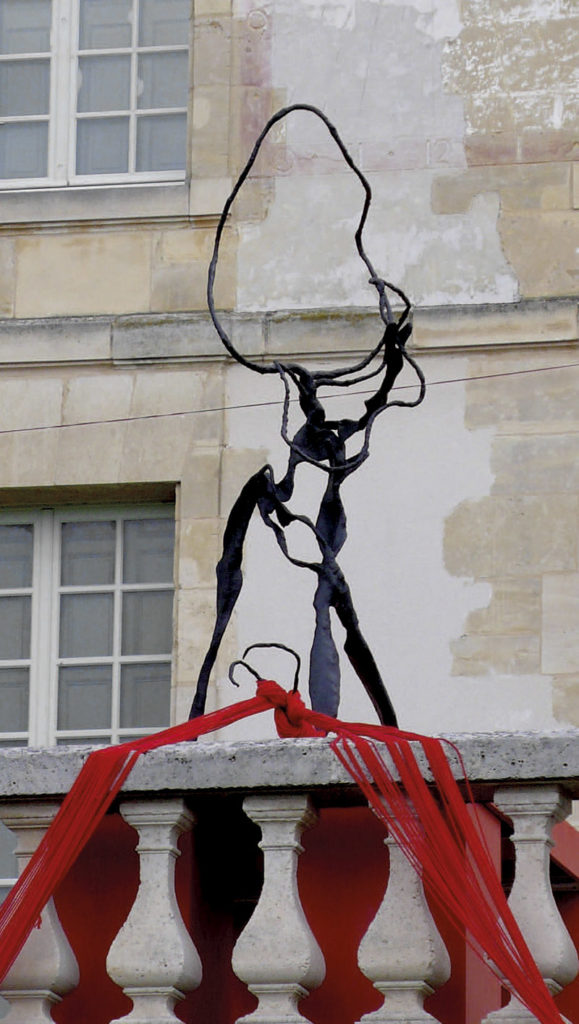
“All things considered”, “Les Céphalaires” series, 2011.
Metal structure, painted plaster,
204 x 93 x 148 cm.
Collection Château Auvers-sur-Oise.
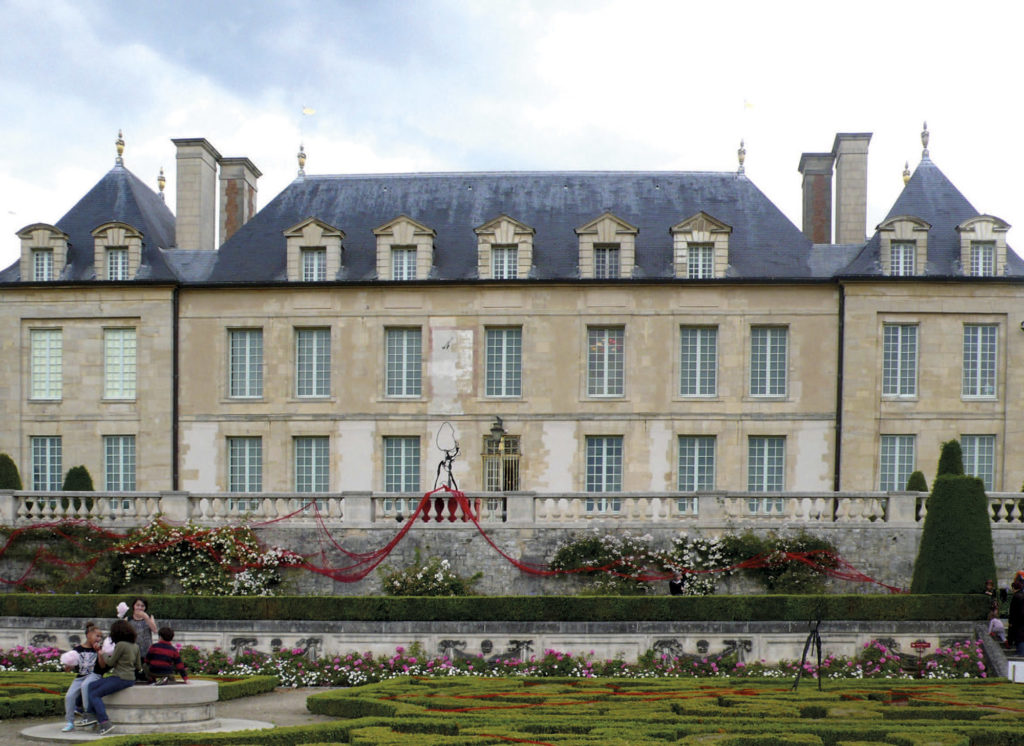
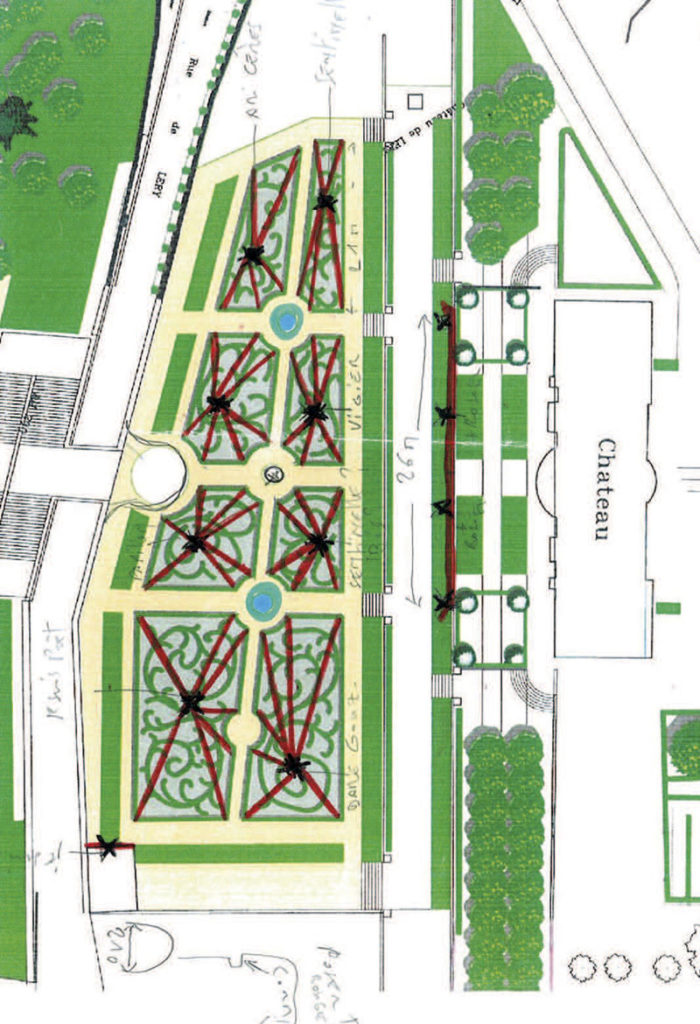

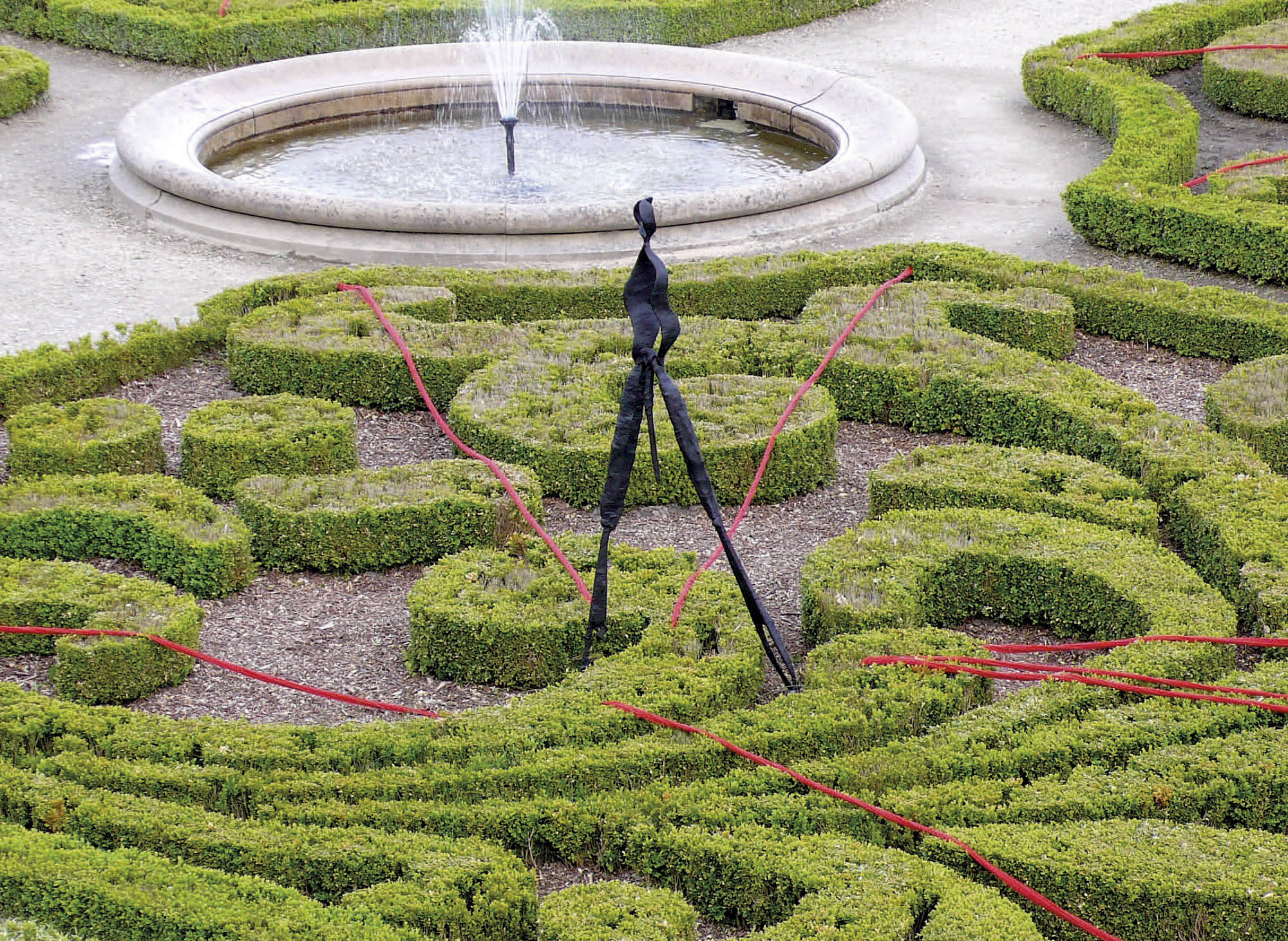
“King Ibis”, 2013.
Metal structure, painted plaster,
182 x 27 x 106 cm.
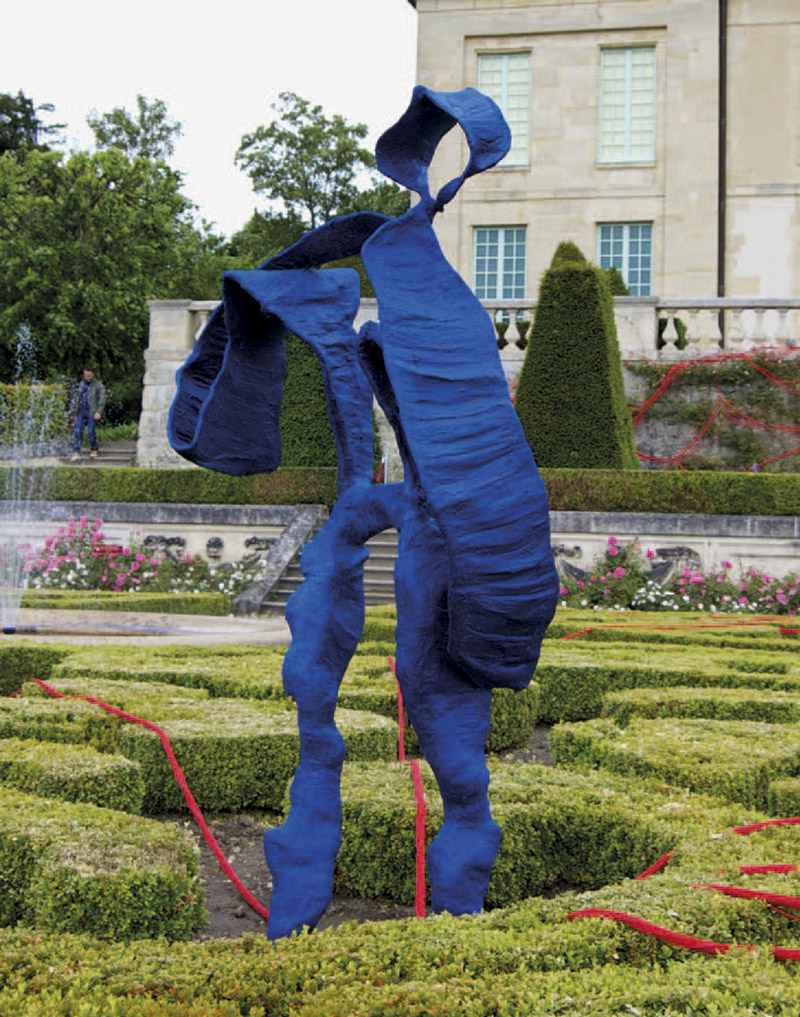
“The Hercynian”, 2009.
Metal structure, painted plaster,
203 x 90 x 69 cm.
Hercynian is the geological term for everything that relates to the Carboniferous period of the Primary Era.
This sculpture is the result of the “Piscean era” and the geological folds that resulted from it. This sculpture is the This sculpture is the result of a synthesis of all these geological characteristics: a creature, half-man, half-rock half man, half rock, seemingly straight out of the Hercynian massifs. A march towards the future.
Views from the exhibition “Behind the door…”, Hôtel de Monthiers, Pontoise, 2013.
With the painter Vincent Corpet.
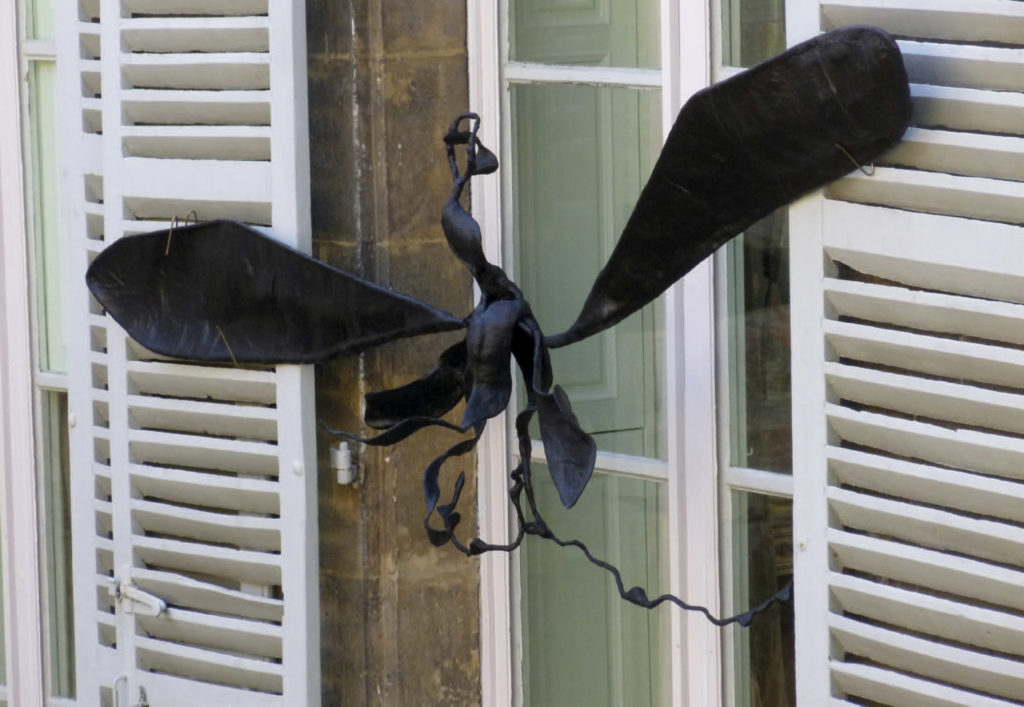
“The Montauban’s lookout”, 2013.
Metal structure, painted plaster,
295 x 120 x 15 cm.
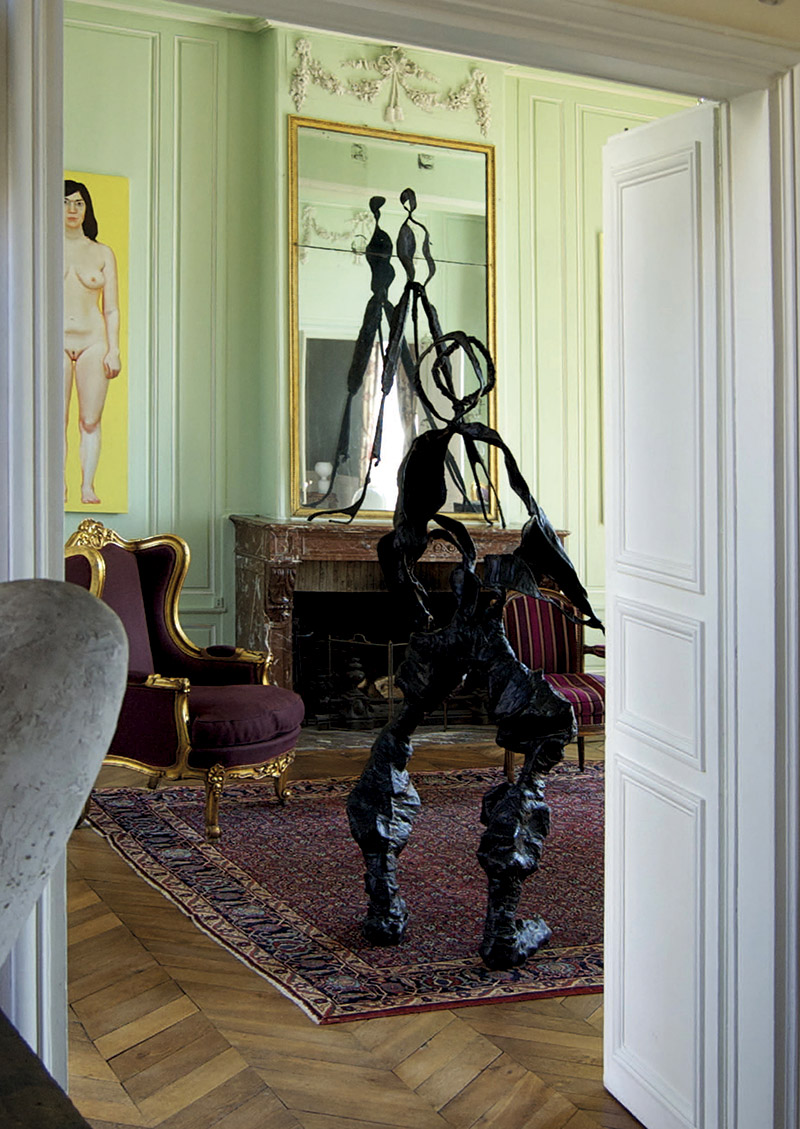
“I am ready”, 2008.
Metal structure, painted plaster,
200 x 70 x 59 cm.
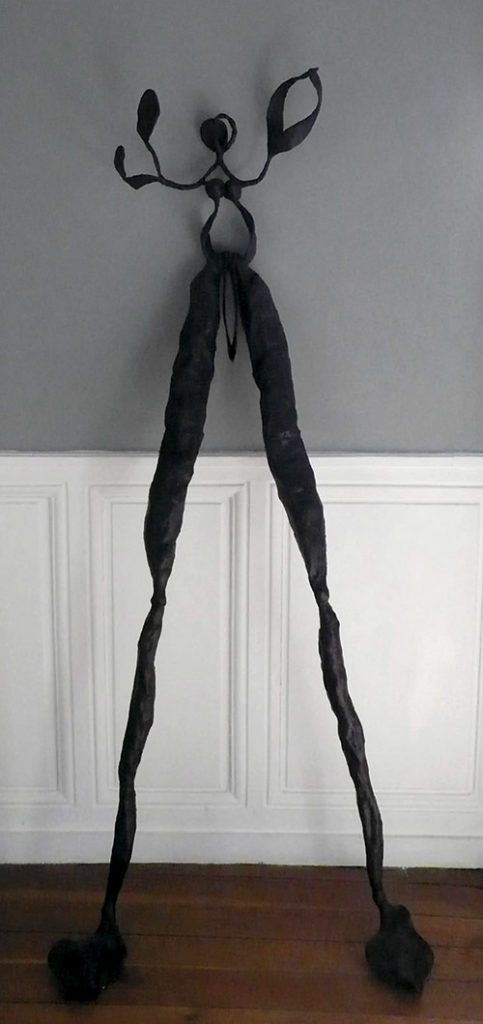
“Summer”, “Les Huertita(s)” series, 2012.
Metal structure, painted plaster,
175 x 70 x 44 cm.
Private collection.
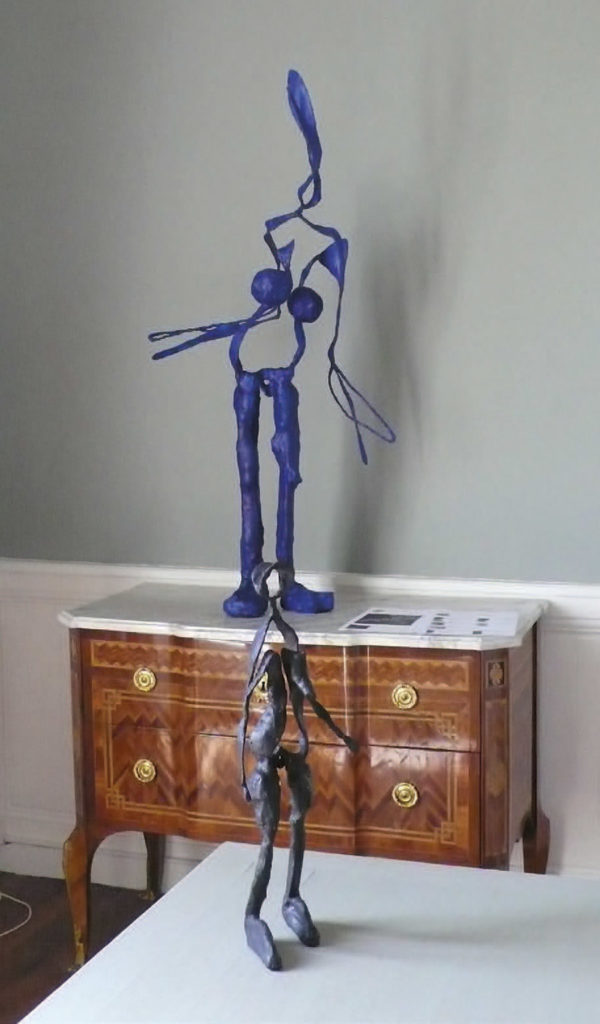
“The Primipare cheerfull”, 2009.
Metal structure, painted plaster,
130 x 65 x 44 cm.
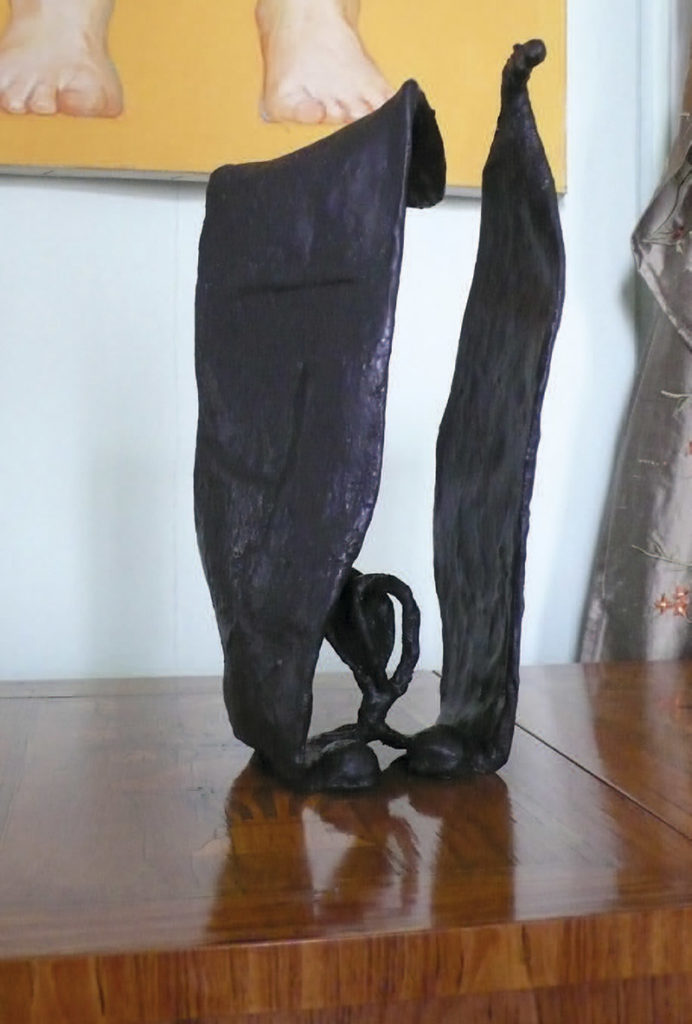
“Enveloped”, “Ladies” series, 2009.
Metal structure, painted plaster,
32 x 15 x 15 cm.
Private collection.
“Pregnant”, “Ladies” series, 2011.
Bronze [2012], print 1/8,
Chapon Foundry,
17 x 15 x 12 cm.
Private collection.

MONUMENTAL PROJECTS
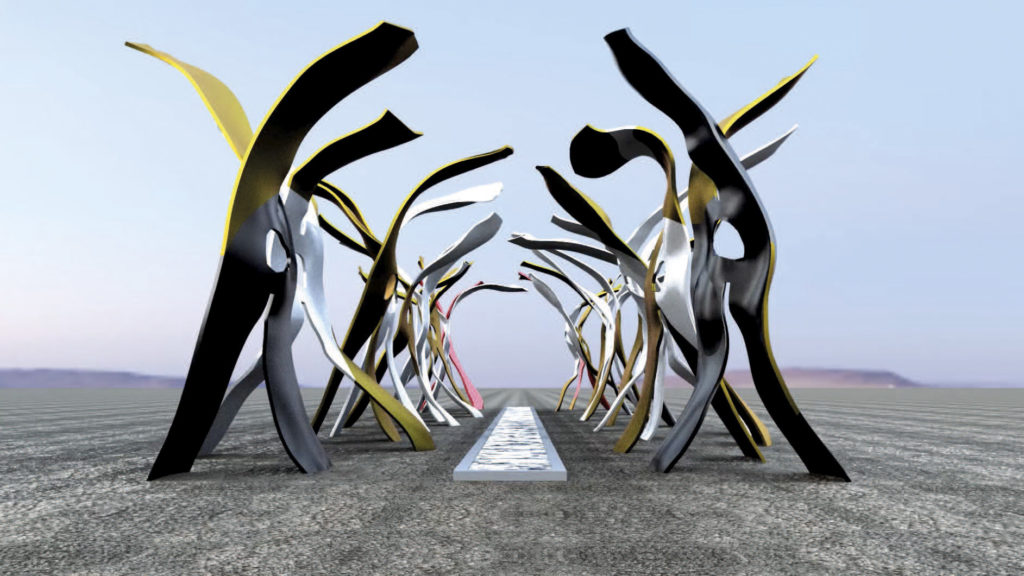
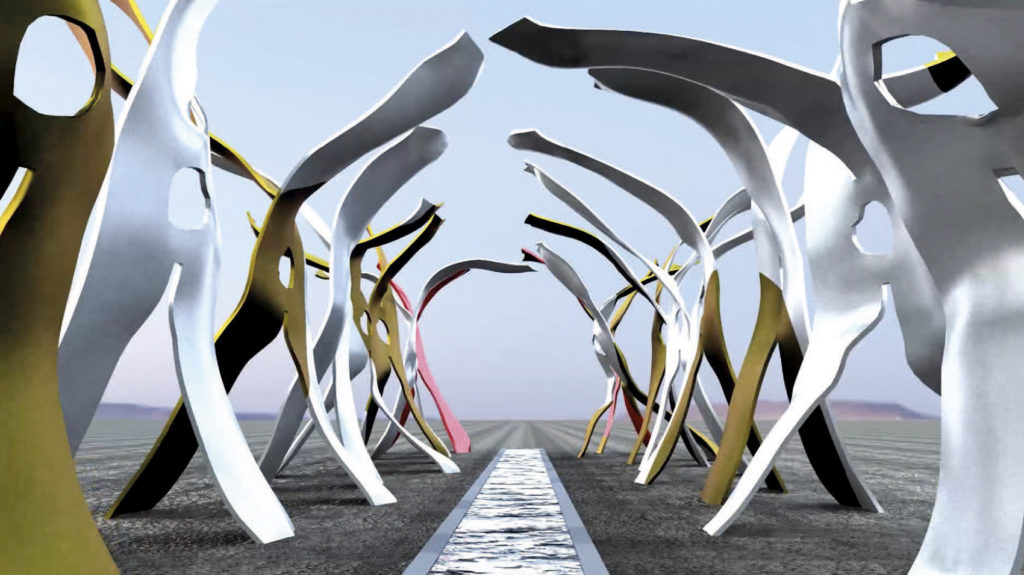
Project “From east to west Promenad”.
Steel blades and gold leaf,
Height 10 m.
3D animation images.
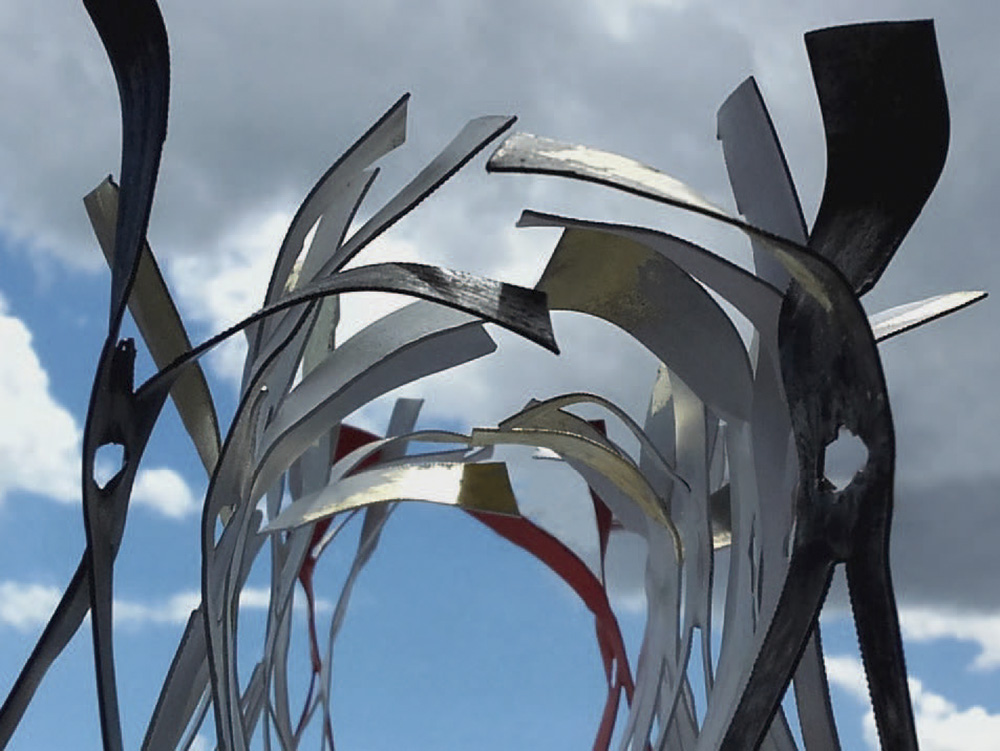
Model photo outside.
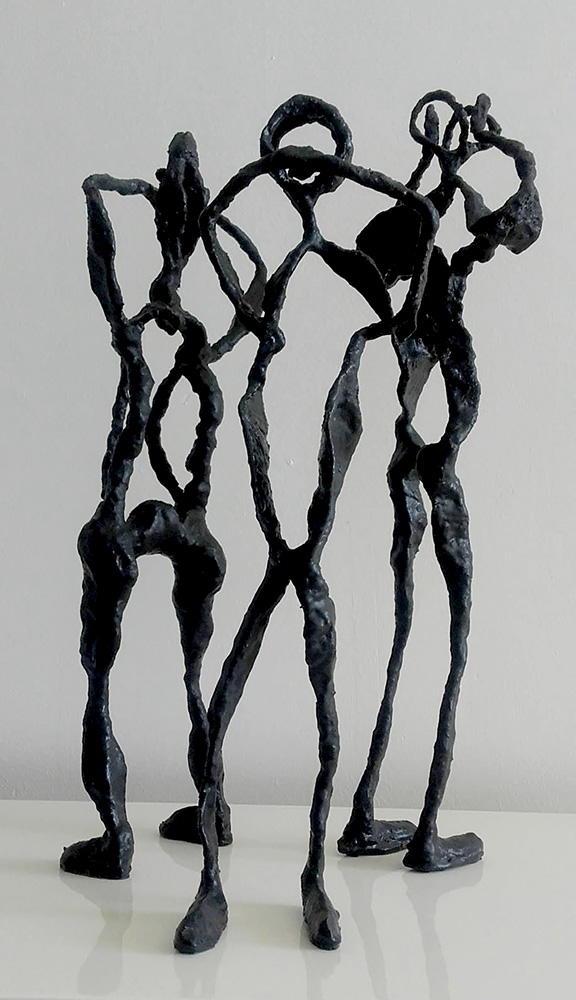
Model
” The three nothing “
Metal structure, painted plaster,
Sees nothing, 46.5 x 18.5 x 8 cm.
Says nothing, 43.5 x 13 x 10 cm.
Hears Nothing, 49 x 15 x 7.5 cm.
Project with a height 5 to 7 m high.
“The three nothing, wisdom”.
As represented in China and Japan, the first monkey covers his eyes, the second covers his ears and the third covers his mouth. They form a kind of pictorial maxim: « see nothing evil, hear nothing evil, say nothing evil. »
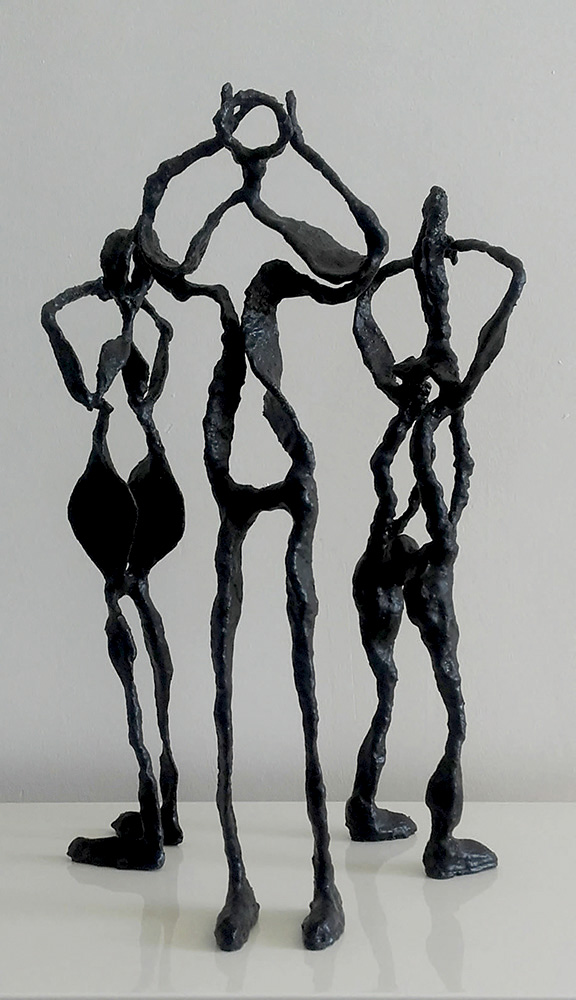
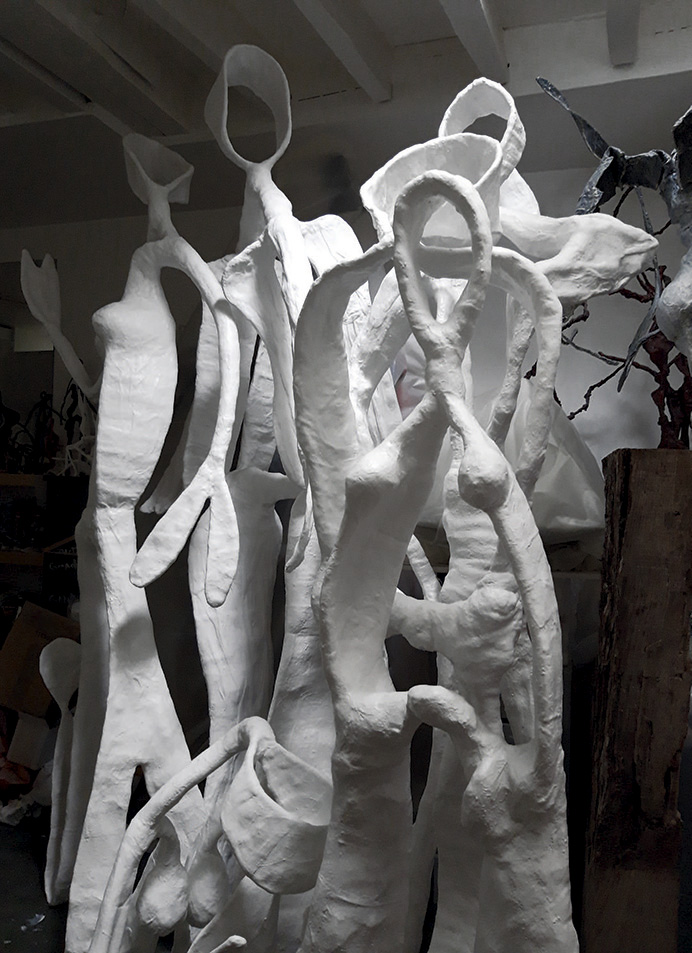
“Happy ending”.
In 1347, when the burghers of Calais left the town, keys in hand and rope around their necks, they had no idea that fate would have a happy ending in store for them.
Sentenced to death by the King of England, whose army was besieging the city, Philippa de Hainaut, his wife, obtained their pardon.
When the end seems inevitable, the unexpected is always possible…
My work is a dialogue with Rodin and these illustrious Bourgeois…
In 1895, a time of romanticism and politics (the Franco-British quarrel), he created heroic, suffering figures marching towards a fatal destiny. The six men are enclosed on a rectangular base, a compact group bound together by the same torment.
Happy ending captures historical reality to unravel the drama.
In a gentle ellipse, the six white silhouettes, almost identical in size to Rodin’s, emerge from the circle of confinement and move forward (without a base), despite their fear, towards a destiny that, against all appearances, is unwritten.
“It’s when you have no hope that you should despair of nothing”. Said Seneca.
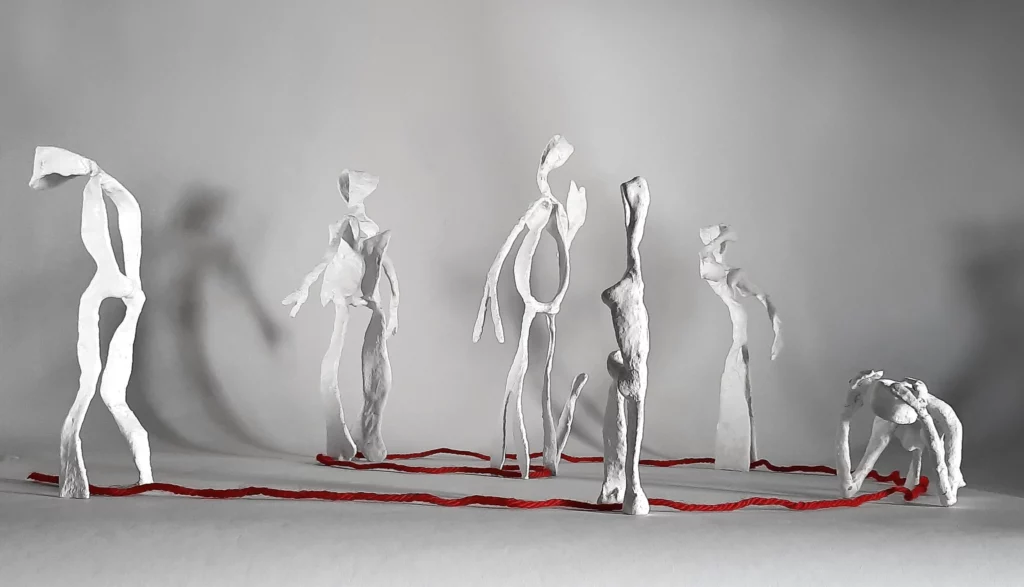
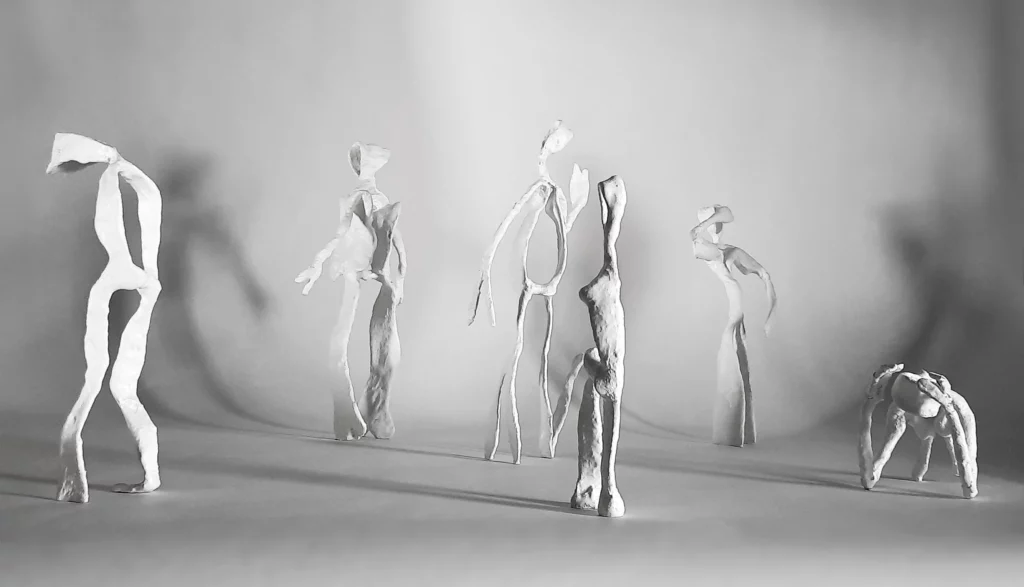

“Happy ending”.
Group of 6 monumental sculptures + – H 210.
